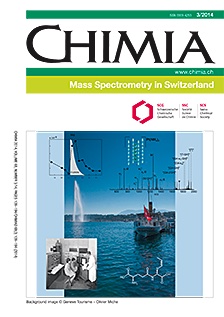Element Analysis of Small and even Smaller Objects by ICPMS and LA-ICPMS
DOI:
https://doi.org/10.2533/chimia.2014.112Keywords:
Element imaging, Icpms, Laser ablation, Nanoparticle analysisAbstract
Inductively coupled plasma mass spectrometry is increasingly used for non-traditional applications such as the analysis of solids at high spatial resolution when combined with laser ablation or the analysis of engineered nanoparticles. This report highlights recent projects and discusses the potentials and limitations these techniques offer. High-resolution laser ablation instrumentation allows element imaging at the ?m-scale and can, therefore, be applied to, e.g., the mapping of metal isotope-labeled antibodies in biological tissues. Despite these advancements, the quantitative analysis of laser-produced aerosols is still a major concern. Here, the accuracy of analysis was found to strongly depend on particle size distribution but also on the morphology and composition of particles. In order to achieve a controlled supply of nanoparticles for analysis by inductively coupled plasma mass spectrometry, a dedicated microdroplet injection system was developed and characterized. This system allows a reproducible injection of single nanoparticles together with internal standards to determine their mass and composition.Downloads
Published
2014-03-26
Issue
Section
Scientific Articles
License
Copyright (c) 2014 Swiss Chemical Society

This work is licensed under a Creative Commons Attribution-NonCommercial 4.0 International License.
How to Cite
[1]
O. Borovinskaya, M. Burger, L. Flamigni, S. Gschwind, D. Tabersky, H. A. O. Wang, B. Hattendorf, J. Koch, D. Günther, Chimia 2014, 68, 112, DOI: 10.2533/chimia.2014.112.







